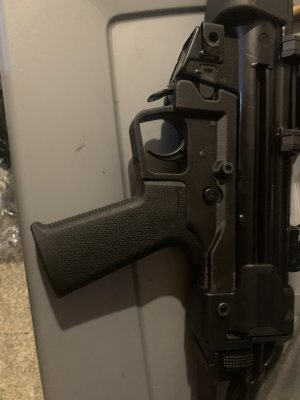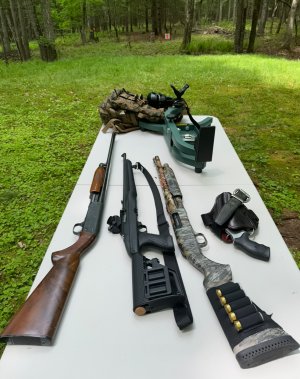There always seems to be a lot of confusion over the difference between a .223 and a 5.56 chamber. Is it safe to shoot this? Is it safe to do that? More confusion is added when some manufacturers advertise rifles with .223/5.56 chambers. I found this 'excellent' explaination on Wikipedia (
http://en.wikipedia.org/wiki/.223_Remington) and wanted to share it on this forum.
The .223 Remington is a sporting cartridge with the same external dimensions as the 5.56x45mm NATO military cartridge. It is loaded with a .224" diameter, jacketed bullet, with weights ranging from 40 up to 90 grains, though the most common loadings by far are 55 grains.
The primary difference between .223 Remington and 5.56 x 45 mm is that .223 is loaded to lower pressures and velocities compared to 5.56 mm. .223 Remington ammunition can be safely fired in a 5.56 mm chambered gun, but the reverse can be an unsafe combination. The additional pressure created by 5.56 mm ammo will frequently cause over-pressure problems such as difficult extraction, flowing brass, or popped primers, but in extreme cases, could damage or destroy the rifle. Chambers cut to .223 Remington specifications have a shorter leade (throat) area as well as slightly shorter headspace dimensions compared to 5.56 mm "military" chamber specs, which contributes to the pressure issues.
While the 5.56 mm and .223 cartridges are very similar, they are not identical. Military cases are made from thicker brass than commercial cases, which reduces the powder capacity (an important consideration for handloaders), and the NATO specification allows a higher chamber pressure. Test barrels made for 5.56mm NATO measure chamber pressure at the case mouth, as opposed to the SAAMI location. This difference accounts for upwards of 20,000+ psi difference in pressure measurements. That means that advertised pressure of 58,000 psi for 5.56mm NATO, is around 78,000 psi tested in .223 Rem test barrels (SAAMI .223 Rem Proof MAP is 78,500 psi so every 5.56mm round fired is a proof load, very dangerous). The 5.56 mm chambering, known as a NATO or mil-spec chambers, have a longer leade, which is the distance between the mouth of the cartridge and the point at which the rifling engages the bullet. The .223 chambering, known as the "SAAMI chamber", is allowed to have a shorter leade, and is only required to be proof tested to the lower SAAMI chamber pressure. To address these issues, various proprietary chambers exist, such as the Wylde chamber[2] or the Armalite chamber, which are designed to handle both 5.56 mm and .223 equally well.
Using commercial .223 cartridges in a 5.56-chambered rifle should work reliably, but generally will not be as accurate as when fired from a .223-chambered gun due to the excessive leade. [3] Using 5.56 mil-spec cartridges (such as the M855) in a .223-chambered rifle can lead to excessive wear and stress on the rifle and even be unsafe, and the SAAMI recommends against the practice.[4] Some commercial rifles marked as ".223 Remington" are in fact suited for 5.56 mm, such as many commercial AR-15 variants and the Ruger Mini-14, but the manufacturer should always be consulted to verify that this is acceptable before attempting it, and signs of excessive pressure (such as flattening or gas staining of the primers) should be looked for in the initial testing with 5.56 mm ammunition.






































